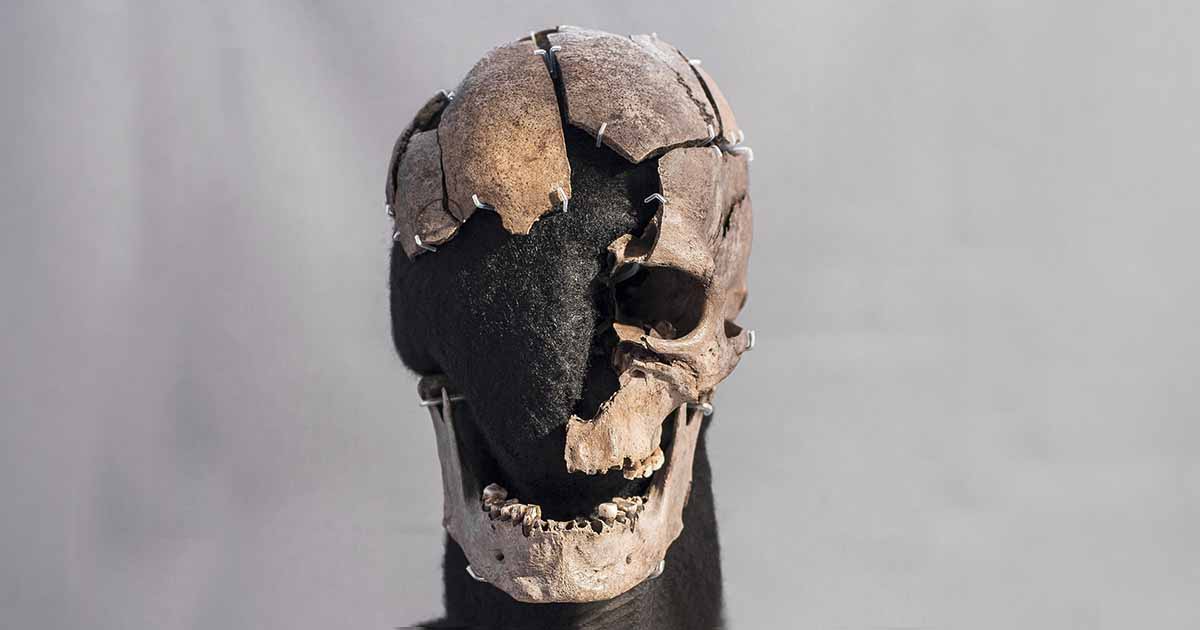New research by a team of archeologists in Scandinavia is shedding light on a man who died a brutal death in the area of Northwest Denmark more than 5,000 years ago.

“Vittrup Man” was first discovered in a peat bog in northern Denmark in 1915.
It was evident that he’d died a brutal death, having received at least eight blows from a club over his body.
For more than a century, this was all that was known about the ancient man.
Now, researchers have mapped out crucial details of his life, determining that he covered a wide geographical area before his death, sometime around 3,200 BCE.
The man likely grew up in northern Norway but, for some reason, traveled to Denmark in his late teens.
It was there that his diet changed from fish to food produced by agriculture.
“He comes from the north, from a relatively cold area, and it must have been a coastal area because the food he ate as a child came from the sea,” said archaeologist Karl-Göran Sjögren, who was a member of the research team.
 New research by Scandinavian archeologists discovered a man who died a brutal death in Northwest Denmark more than 5,000 years ago. Stephen Freiheit / SWNS
New research by Scandinavian archeologists discovered a man who died a brutal death in Northwest Denmark more than 5,000 years ago. Stephen Freiheit / SWNS
The researchers determined the “Vittrup Man” likely spent 10 to 20 years in a farming community in Denmark before he was “brutally clubbed to death.”
The revolutionary techniques in DNA analysis, analysis of dental calculus, and isotope analysis, are opening new windows into the lives of ancient peoples.
Anders Fischer, who is part of the Swedish-Danish team that is linked to the University of Gothenburg, said such techniques enable researchers to “follow this individual’s geographical and dietary development from birth to death.”
“As far as we know, this is the first time researchers have been able to map a person’s life history in such great detail and from so long ago,” Fischer said.
The study, published in Nature, is part of a larger study examining the genomes and DNA of the prehistoric Nordic population.
“Vittrup Man” is part of an analysis of 100 teeth and bone remains found in Denmark.
Researchers were particularly drawn to “Vittrup Man” because his genome “differed markedly from the rest of the Danish Stone Age population,” said Fischer.
“[H]e was closely related to contemporary people living on the Scandinavian peninsula, in what is now northern Norway and Sweden,” Fisher said. “This is why we chose to study his origins and life history in detail.”
 Now, researchers have mapped out crucial details of his life, determining that he covered a wide geographical area before his death, sometime around 3,200 BCE. Anders Fischer/ Niels Bach/ SWNS
Now, researchers have mapped out crucial details of his life, determining that he covered a wide geographical area before his death, sometime around 3,200 BCE. Anders Fischer/ Niels Bach/ SWNS
It remains unclear how “Vittrup Man” ended up in Denmark or why he was clubbed to death and archaeologists can only speculate.
Researchers have speculated he may have been sacrificed.
“The study now adds a real flesh and blood human being to these finds,” said Lasse Sørensen, an expert in the Neolithic period at the National Museum of Denmark in Copenhagen and a member of the research team.